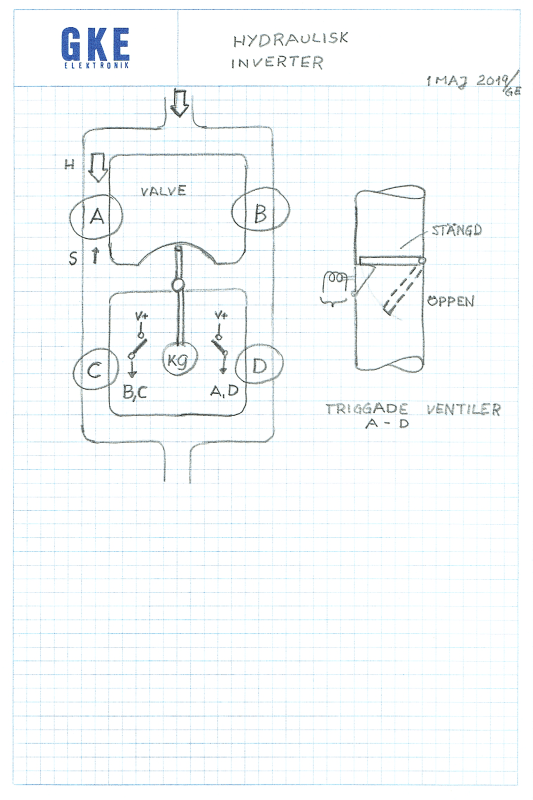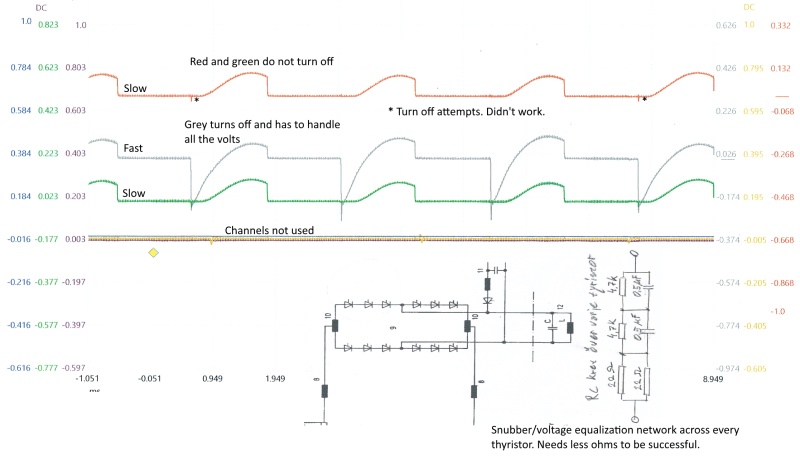Skogsgurra
Electrical
Self-commutated H bridge. Running at 400-600 Hz with DC up to 2 kV and output current up to 1 kA.
The original design uses three thyristors in each "leg" of the H. The reason is that fast thyristors were not available at 2 kV at the time of its conception and birth.
It seems to be time to refresh this granddad and give it better legs where a single thyristor handles each leg. That would make things a lot simpler (four thyristors instead of twelve) and make it less sensitive to snubber and voltage divider problems.
The Igate is standard, couple of volts and 1-2 A. Nothing special there. The tq is where the problem is. Tests have been made with long tq (like 200 us)and with no luck.
Been searching the Net for some time but don't find anything suitable. Any tips from EngTips?
Gunnar Englund
--------------------------------------
Half full - Half empty? I don't mind. It's what in it that counts.
The original design uses three thyristors in each "leg" of the H. The reason is that fast thyristors were not available at 2 kV at the time of its conception and birth.
It seems to be time to refresh this granddad and give it better legs where a single thyristor handles each leg. That would make things a lot simpler (four thyristors instead of twelve) and make it less sensitive to snubber and voltage divider problems.
The Igate is standard, couple of volts and 1-2 A. Nothing special there. The tq is where the problem is. Tests have been made with long tq (like 200 us)and with no luck.
Been searching the Net for some time but don't find anything suitable. Any tips from EngTips?
Gunnar Englund
--------------------------------------
Half full - Half empty? I don't mind. It's what in it that counts.


